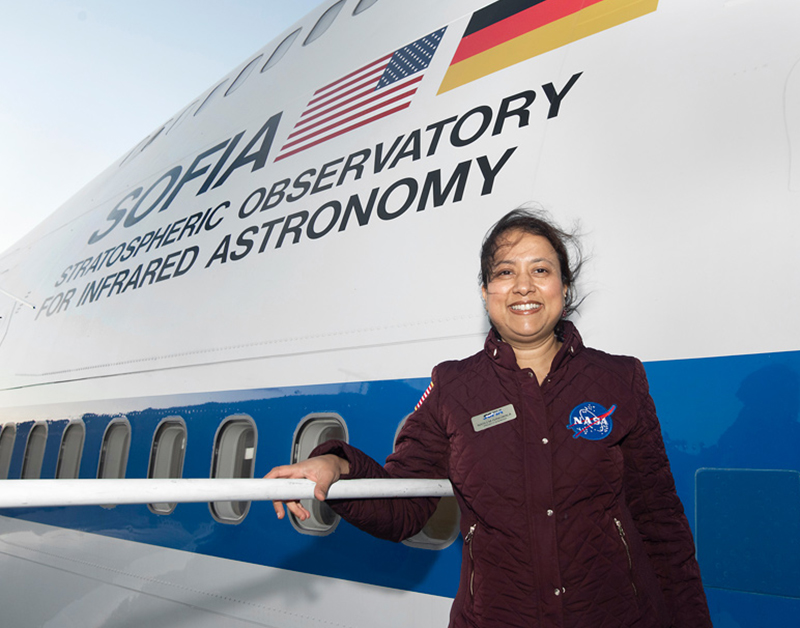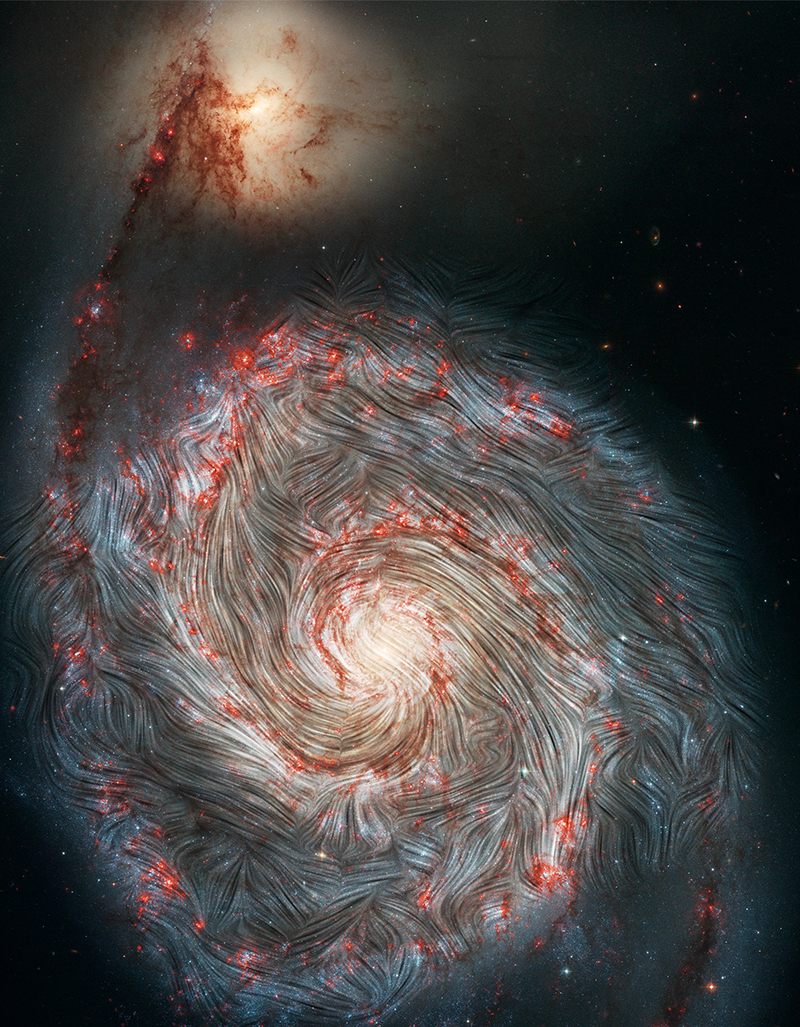
Naseem Rangwala
Astrophysicist / SOFIA Project Scientist - NASA's Ames Research Center
One textbook chapter turned Naseem Rangwala into someone intent on studying the mysteries of the universe. Today she does just that, as project scientist for NASA’s flying telescope, the Stratospheric Observatory for Infrared Astronomy.
Naseem Rangwala can’t think of a single unmarried woman from the small community where she grew up who moved abroad in pursuit of a career. But then, one day, she pulled up her roots from her hometown in India and made her way to NASA.
Rangwala is the project scientist for NASA’s Stratospheric Observatory for Infrared Astronomy, a telescope installed aboard a modified Boeing 747 aircraft. Recently, she has helped other researchers use SOFIA to make exciting discoveries, like finding water on the sunlit surface of the Moon or learning that comets could have delivered carbon, a key ingredient of life, to Earth long ago. But this is not a job she was obviously destined for – nor one she always knew she wanted.
Growing up in the town of Udaipur, India, she was an average student, not that interested in school or science, and was told by her school that she needed to work harder. Then, at age 16, she discovered astronomy.
“There was one lonely chapter on astronomy in our textbook, and it just triggered something,” she said. “It was about distances in the universe – from our Sun to the next star, from the Milky Way to the next galaxy – and I thought, ‘Wow, how insignificant we are! The universe is such a big space and there are so many exciting things to know about it!’”
She had to find out more and talked to her older brother about how to pursue studying science. By the end of that year, she was at the top of her class.
“It goes to show that when we strive to motivate kids, especially girls, to get into science, simply having the right information available at the right level is so important, and teachers can have a big influence,” she said.
She also sees independence of thought as incredibly empowering: the realization that you can think for yourself, follow the topics that inspire you, and choose the person you want to be. Rangwala feels that many girls around the world are not brought up to seek this independence, but if they can experience that intellectual freedom, it can give them the courage to make a move.
And move Rangwala did – around the world and within the realms of astronomy and physics, getting to know her scientific passions. From her hometown to the big city for college; from India to the United Kingdom to the United States for her master’s degree and doctorate; and, later, to NASA. Along that path, she sharpened her focus from general physics to particle physics to astrophysics, and then infrared astronomy, her specialty – and SOFIA’s – today.
Beyond the rainbow of colors making up the spectrum of light visible to our eyes are the longer wavelengths of infrared light. We can’t see them, but special cameras on telescopes like SOFIA can, and they reveal a universe aglow in the infrared.
“Infrared makes up half the radiant energy out there,” Rangwala said. “So, if you’re only studying space in the range of visible light, you’re missing half of what there is to know!”
She uses SOFIA for her own research, studying how the key ingredients of life are formed in space and delivered to planets like ours. “The path to life,” she calls it. Things like water and the molecules that eventually make up amino acids, which then make up proteins, are created during the formation of stars. This happens inside clouds of dust and gas that mostly block visible light, but with SOFIA’s infrared “eyes,” Rangwala can peer inside.
She is also the project scientist, or chief scientist, of the flying observatory. Her work ensures the community of researchers using SOFIA can do as many studies as possible with the telescope, and make it the best science possible. Often, they’re studying star and planet formation. Looking for water on the Moon wasn’t originally planned for SOFIA, but a few lunar scientists made a compelling case to try. And the observatory has other new tricks up its sleeve.
“SOFIA’s new capability for mapping magnetic fields on the scale of galaxies is just amazing!” Rangwala said. “It gives us beautiful images with important scientific information in them that look like Van Gogh paintings. The observatory’s users call SOFIA ‘the Van Gogh of the 21st century!’”

Working with such a talented astronomic artist inspires Rangwala on every level.
“SOFIA lets me do it all. My position allows me to enable scientific discovery. I’m able to do the research I like, using SOFIA,” Rangwala said. “And it’s such an amazing platform that we can inspire the next generation with our diverse team of pilots, technicians, mechanics, flight planners, scientists, engineers, mission planners... It’s a really amazing experience to be part of.”
SOFIA is a joint project of NASA and the German Aerospace Center. NASA’s Ames Research Center in California’s Silicon Valley manages the SOFIA program, science, and mission operations in cooperation with the Universities Space Research Association, headquartered in Columbia, Maryland, and the German SOFIA Institute at the University of Stuttgart. The aircraft is maintained and operated by NASA’s Armstrong Flight Research Center Building 703, in Palmdale, California.
Planetary science is a global profession.

